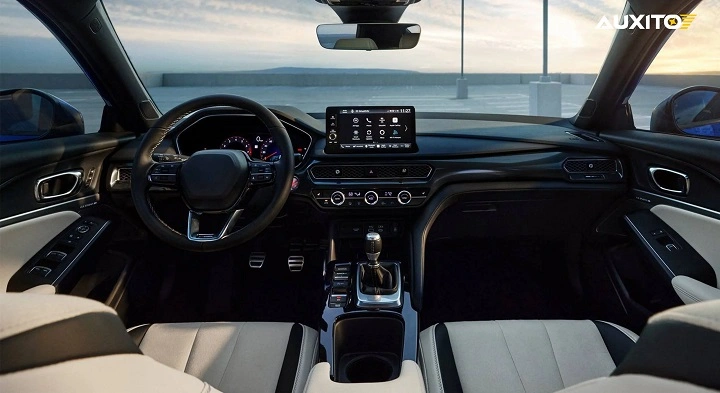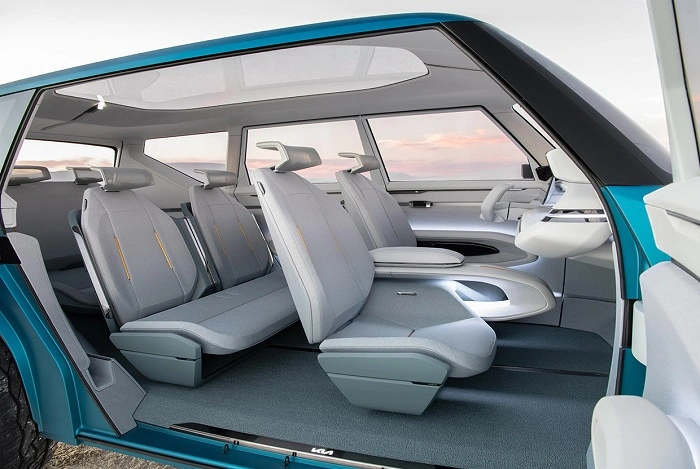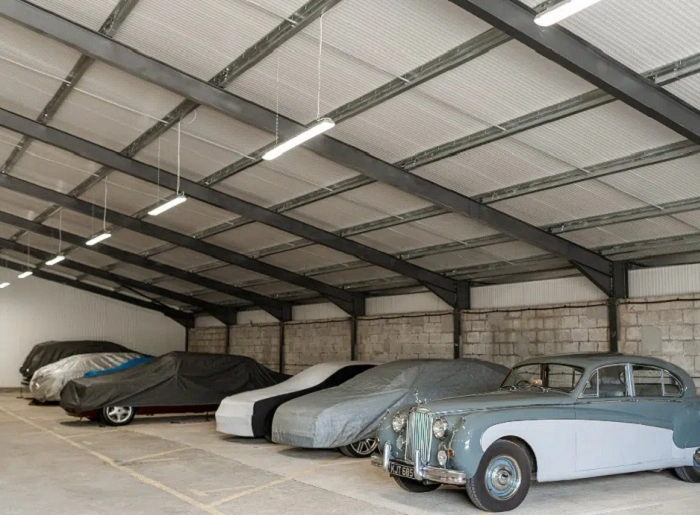Getting into a car is not really getting into a car but rather getting into space that has been engineered to be safe, comfortable, and in control. For most of us, cars are where we spend a few hours a week—driving to the office, running somewhere, or doing errands. How often do we even pay attention to how versatile and incredible the inside of a car is?
From the wheel to the stereo, everything within a car is functional. There are amenities for safety, and some for the purposes of comfort while in transit. Even newer cars combine technology, comfort, and aesthetics that were unimaginable many decades ago.
This blog exhausts all the nitty-gritty inside a car—the design, amenities, controls, storage, technology, safety, and comfort. You could be a new driver questioning every button or someone interested in more about your car, and this guide has the whole story.
The Layout Inside a Car
Cars may vary in design and dimensions but all work with the same inside layout.
The Driver’s Side
- Steering Wheel – In the middle to guide. With buttons for audio, call, and cruise control.
- Instrument Cluster – Displays speed, fuel, temperature, and warning lights.
- Pedals – Gas, brake, and clutch (for manual).
- Gear Shifter – In the center console or on the steering column.
The Passenger Side
- Dashboard – Along the passenger side of the car, including glovebox, air vents, and infotainment.
- Seating – Spacious with headrest and legroom adjustment.
Rear Area
- Seats – Two to three depending on the car.
- Storage Pockets – Typically built into doors or rear of seats.
- Child Seat Anchors – Typically present on most newer cars.
This configuration is a compromise between utility and convenience.
Dashboard Essentials
The car’s dashboard is the seat of power.
Typical Dashboard Contents:
- Speedometer – Displays speed.
- Fuel Gauge – Indicates fuel level.
- Temperature Gauge – Manages engine temperature.
- Warning Lights – Brakes, airbags, battery, and oil pressure.
- Infotainment Screen – Map, music, and connectivity commands. All on a screen.
Dashboards are now minimalist and now usually electronic, easier to read and change settings.
Seating In a Car
There is safety to go with comfort too.
Types of Car Seats:
- Cloth Seats – Low-cost and durable.
- Leather Seats – Upscale and easy to clean.
- Synthetic Leather – Middle ground between cost-friendliness and high-end experience.
- Bucket Seats – Spoon-shaped body, characteristic of sport cars.
- Bench Seats – Rounded up by trucks and older vehicles.
Comfort Features:
- Amenities for heating and cooling.
- Power control with memory features.
- Lumbar support for extended driving.
Seat design can be the break-or-make feature of the trip.
Steering Wheel and Controls
The steering wheel is your first point of contact.
Features on Contemporary Steering Wheels:
- Volume control and skipping tracks.
- Answering incoming phone calls.
- Voice command to turn on.
- Cruise control and adaptive cruise.
- Paddle shifters (on performance variants).
It’s not so much about turning the vehicle around—it’s a multi-function command center.
Infotainment System
The infotainment system combines entertainment and information.
Features:
- Music and Radio – AM/FM, satellite, Bluetooth, and USB.
- Navigation – GPS built-in or smartphone connectivity.
- Connectivity – Apple CarPlay and Android Auto.
- Voice Control – Voice operation without hands.
- Vehicle Settings – Manage lighting, drive modes, and safety features.
More touchscreens and phone integration have made driving a highly technologically advanced experience.
Climate Control
Comfort in a car is dependent on proper climate systems.
- Air Conditioning (AC) – Cooler inside.
- Heating System – Heats during winter.
- Dual-Zone Climate Control – Allows driver and passenger to set different temperatures.
- Rear Vents – Comforts back-seat passengers.
Climate control gives a person an aura of comfort regardless of what the outside is like.
Storage Solutions Within Cars
Space within a car is made available sensibly to give room for essentials.
Storage Spaces in General:
- Glovebox – For small items and documents.
- Center Console – For wallets, beverages, and phones.
- Door Pockets – Space for maps, bottles, or an umbrella.
- Cup Holders – Most current cars feature these.
- Trunk Access – Some cars feature fold-down rear seats to provide more space.
Smart storage keeps the interior of the car organized for the daily commute.
Safety Features of a Car
Safety features take center stage in new cars with features built-in.
Passive Safety
- Seatbelts – Three-point belt for every position.
- Airbags – Front, side, curtain, and knee airbags.
- Crumple Zones – Energy-absorbing features.
Active Safety:
- Lane Departure Warning
- Automatic Emergency Braking
- Blind-Spot Monitoring
- Adaptive Cruise Control
These safety items safeguard drivers and passengers.
Lighting Inside Cars
Interior lighting is mood and visibility.
- Dome Lights – Illuminates the cabin.
- Map Lights – Small reading lights for individuals.
- Ambient Lighting – Creates mood with programmed color.
- Courtesy Lights – Turns on with doors opening.
Low light creates a sense of luxury and comfort in automobile interiors.
Materials Used to Make Car Interiors
Interior texture of a car depends on what it is made of.
- Plastics – Chalky in texture and are found in economy vehicles.
- Cloth Upholstery – Ventilated and cost-effective.
- Leather – Good texture but requires upkeep.
- Wood Trim – Found in luxury cars.
- Carbon Fiber – Light, sporty look.
All of the above materials affect not only appearance but maintenance as well.
Features Most Suitable for Children
Family cars are being manufactured today.
- Latch Systems – Keeping car seats in place.
- Rear Window Locks – Anti-crash unlocking.
- Built-In Sunshades – Cool kids.
- Rear Seat Reminders – Alert if a child is left behind.
All these transform a car’s interior into a child-friendly environment.
Interior Technology Breakthroughs
The in-car interior becomes smarter with every new generation.
- Digital Cockpits – Not old-style analog dials.
- Head-Up Displays – Project information onto the windshield.
- Wireless Charging Pads – For devices and smartphones.
- Gesture Controls – Adjusting settings with hand gestures.
- AI Assistants – Voice control for entertainment and navigation.
They future-proof the cabin and are user-friendly.
Sound System and Entertainment
The car drives better with a superb sound system.
- Basic Systems – Regular radios and music speakers.
- Premium Systems – Bose, Harman Kardon, or Bang & Olufsen.
- Surround Sound – It provides a cinematic experience.
- Streaming Options – Spotify and Apple Music Support.
Music makes the inside of a car a cozy concert hall.
Comfort Add-Ons
Some features make long drives better.
- Heated and Ventilated Seats
- Massage Seats
- Panoramic Sunroof
- Adjustable Ambient Lighting
- Noise-Canceling Interiors
These add-ons offer a comfortable and hassle-free space.
Comparing Interiors Among Car Types
| Car Type | Interior Style | Best For |
| Economy Cars | Simple, functional, budget-friendly | Daily commutes |
| SUVs | Roomy, family-oriented | Families, road trips |
| Sports Cars | Performance-honed, lightweight | Enthusiasts |
| Luxury Cars | Comfort materials, high-end technology | Comfort connoisseurs |
| EVs | High-tech, modern, futuristic | Tech enthusiasts |
Different types of cars offer different interior experiences.
How Interiors Have Evolved
Car interiors have evolved significantly.
- 1950s–70s – Basic dashboards, no airbags, little comfort.
- 1980s–90s – Airbags, cassette decks, little electronics.
- 2000s – Touchscreens, navigation, and better materials.
- Today – AI, smart assistants, digital displays, and eco-friendly materials.
The car interior mirrors the evolution of design and technology.
How to Clean the Car Interior
Interior cleanliness increases comfort and value.
- Vacuum regularly.
- Use seat covers and floor mats.
- Clean dashboards with microfiber.
- Keep trash bags handy.
- Air fresheners are used to make cabins inviting.
Good habits keep interiors new.
Mistakes to Steer Clear of in a Vehicle
Most individuals unwittingly destroy automobile interiors.
- Leaving drinks or food that spill.
- Not noticing dashboard warning lights.
- Using aggressive chemicals on interior upholstery.
- Overstuffing storage bins.
- Not cleaning frequently.
Avoiding these blunders keeps your vehicle interior in service longer.
The Interior of Automobiles in the Future
Future vehicles will feature even more intelligent interior.
- All-digital dashboard displays.
- Control systems that are automated.
- Extended reality head-up display.
- Eco-friendly recycled components.
- Superb climate and seating systems.
The interior of a vehicle will look even more like a living room on wheels.
Frequently Asked Questions About the Interior of a Vehicle
What is the most vital piece of gear in a vehicle?
Safety equipment like seatbelts and airbags remain the most essential.
How can I customize the interior of my car to make it cozier?
Add seat covers, cushions, sunshades, and organizers that you can bring with you.
What is the most stylish car interior these days?
High-end manufacturers Mercedes-Benz, Audi, and Tesla are the trendsetters with sophisticated interiors.
How often should I get the interior of my car cleaned?
At least monthly, and more frequently if you have children or pets.
Can I customize the interior of my car?
Yes, with seat covers available after-market, infotainment center, ambient lighting, and storage compartments.
Inside a car is where the real ride is. It’s not just the steering wheel and seats. It’s also about safety, comfort, and convenience. From mundane aspects like dashboards and air conditionings to sophisticated features. Like ambient light and AI assistants, the interior of a car has changed.
By being the ultimate authority on it all, you can drive more, care better for your car, and even personalize it to fit your life. You drive daily or only on weekends—your place in the car is yours to arrange as useful and comfortable as you want.




